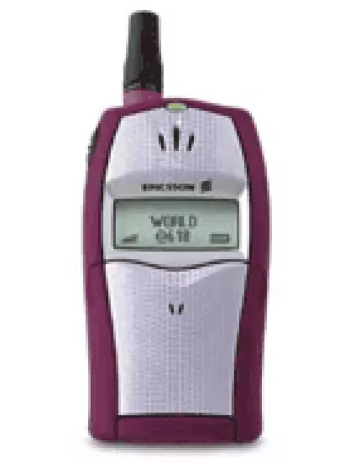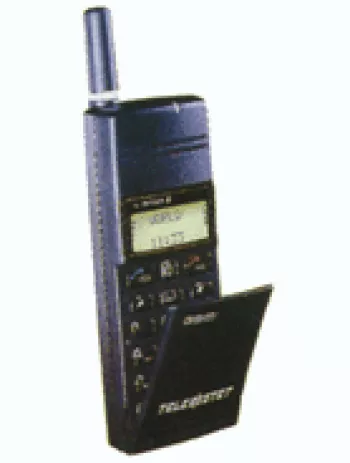
Introduction to Ericsson T66
The Ericsson T66 was a remarkable mobile phone that marked a significant milestone in the evolution of mobile communication devices. Introduced in the early 2000s, this model was favored for its compact design, basic functionality, and user-centric features. Despite being discontinued, its legacy remains relevant when discussing the history of mobile telephony.
Design and Build
The Ericsson T66 was renowned for its exceptionally compact design, measuring just 92 x 41 x 17.5 mm and weighing a mere 59 g. This made it one of the smallest and lightest phones of its time, fitting comfortably into the pockets of users. The design was simplistic yet stylish, available in two color variants: Purple Passion and Silver Supreme. The device housed a monochrome graphical display capable of showing 5 lines of text, making it practical for basic text communication and menu navigation.
Display Features
The T66 featured a monochrome graphic display, a standard during its era. Although it lacked the color and vibrancy of later models, the display efficiently supported the phone’s fundamental functions. The 5-line resolution facilitated adequate visibility for reading messages and viewing call logs, contributing to its user-friendly interface.
Connectivity and Network
The device supported GSM technology, operating on 900/1800/1900 MHz bands, making it compatible with a variety of network providers. It did not support GPRS or EDGE for data transmission, characteristic of its focus on voice and basic messaging functionality. The inclusion of a Mini-SIM slot was standard, simplifying its integration with existing network infrastructures.
Battery Performance
Equipped with a removable NiMH battery, the T66 provided a standby time of up to 150 hours and a talk time ranging from 2 to 5 hours. This performance was adequate for the time, given the phone's focus on essential communication features. The removable battery design allowed users to exchange batteries, extending usability in scenarios without immediate access to charging facilities.
Sound and Alert Features
The sound capabilities of the Ericsson T66 were fundamentally basic. It did not include a loudspeaker but supported downloadable monophonic ringtones, a trend at the time. Vibration alerts were available, offering users an alternative notification method when silent alerts were necessary. The absence of a 3.5mm audio jack reflected its utilitarian design, focusing primarily on communication rather than multimedia functionalities.
Communication and Messaging
While the T66 did not support advanced web browsing capabilities, it did feature WAP 1.2.1 for minimalistic browsing experiences. Messaging support included SMS and EMS, providing users the facility to send text messages efficiently. This minimalist approach underscored the phone's commitment to core communication features.
Memory and Storage
In terms of storage, the Ericsson T66 lacked a card slot for external memory expansion. It supported a modest number of call records, storing up to 10 received, dialed, and missed calls—adequate for the period's average mobile user. The absence of extensive memory capabilities emphasized the phone’s focus on essential communication functions.
Limitations and Considerations
Despite its innovative design, the Ericsson T66 had several limitations reflective of its era. The lack of camera functionality, mobile internet capabilities, and multimedia features positioned it as a basic communication device. However, its lightweight design, reliable connectivity, and user-friendly interface maintained its appeal among consumers seeking simplicity and portability.
Conclusion
The Ericsson T66 remains a notable product in the historical landscape of mobile phones. It represented a balance between technological progression and user-centric design. Its legacy lies in its commitment to providing straightforward communication solutions, compact design, and portability—a precursor to the more advanced mobile devices that followed.
Main Features of Ericsson T66
- Compact and lightweight design with dimensions of 92 x 41 x 17.5 mm and a weight of 59 g.
- Supports GSM technology across 900, 1800, and 1900 bands.
- Provides basic monochrome graphic display with 5 lines of resolution.
- Includes downloadable monophonic ringtones with a composer feature.
- Features SMS and EMS messaging capabilities.
- Equipped with WAP 1.2.1 browser for limited mobile internet access.
- Available in two colors: Purple Passion and Silver Supreme.
- NiMH battery providing a standby time up to 150 hours and talk time between 2 to 5 hours.
Drawbacks of Ericsson T66
- No GPRS or EDGE support for mobile data connectivity.
- Discontinued status makes the device outdated and hard to find.
- Monochrome graphic display with only 5 lines, lacking color and modern resolution.
- No card slot for expandable memory, limiting storage capacity.
- No loudspeaker and 3.5mm audio jack; limited sound options.
- Lack of connectivity options such as WLAN, Bluetooth, and USB.
- No built-in camera for capturing photos or videos.
- Limited call record storage with only 10 received, dialed, and missed calls.
- Absence of GPS and Radio features.
- Does not support Java applications, limiting software capabilities.

View Also
More Phones
All Rights Reserved +14266 Phones © Mobilawy 2025
























